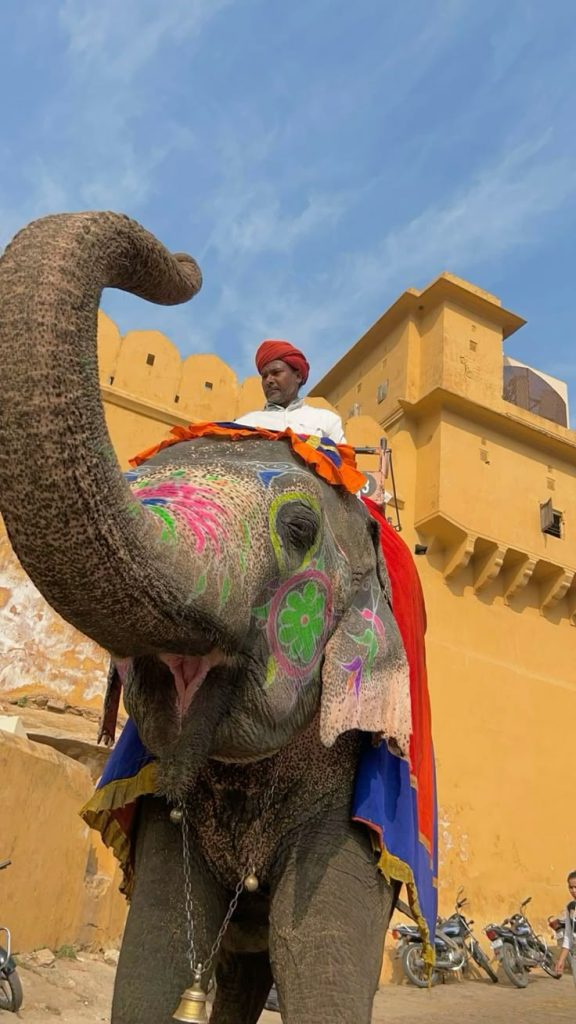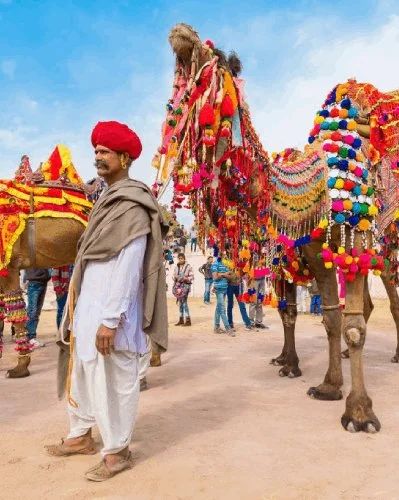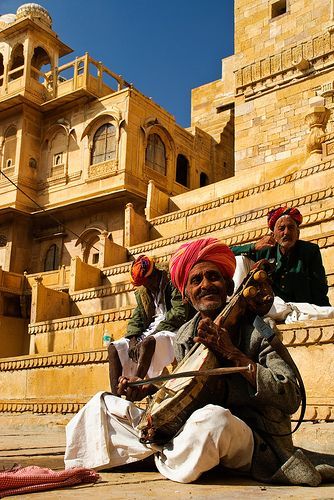When the earth cracked under a merciless sun and water became a distant memory, one village in Rajasthan proved that humanity is still alive—by turning its compassion towards the voiceless.
In a world often divided by borders, beliefs, and biases, a heartwarming story has emerged from the arid lands of Rajasthan, reminding us that hope flows where empathy leads.
Recently, in the heart of India’s most drought-prone region, 690 villagers from a small desert hamlet united to save wild animals and birds from dying of thirst—a crisis brought on by scorching heatwaves and severe water scarcity.
This isn’t just a tale of survival. It’s a story of community, courage, and coexistence.
A Land of Beauty—and Brutal Heat
Rajasthan is known for its vibrant culture, majestic forts, and desert landscapes, but summer in the region can be unforgiving. Temperatures often soar above 48°C (118°F), drying up natural water sources and endangering not just human life, but the lives of countless wild animals, birds, and livestock that rely on ponds and lakes for survival.
This year, the heat was especially harsh. Several traditional water  id-flight and deer collapsing near dry waterholes. One evening, an elder saw a wild peacock lying motionless in his courtyard—alive, but barely. That moment sparked a movement.
id-flight and deer collapsing near dry waterholes. One evening, an elder saw a wild peacock lying motionless in his courtyard—alive, but barely. That moment sparked a movement.
Instead of waiting for help, the villagers chose to become the help.
They organized themselves into volunteer groups, pooled their limited resources, and launched a large-scale “Jal Sewa” (Water Service) campaign—not for themselves, but for the animals they shared their land with.
What They Did: Simple Acts, Extraordinary Impact
1. Water Pots Every 100 Meters:
Earthen pots were placed every 100 meters across the village, in open fields, rooftops, and near trees—regularly refilled with clean water by rotating groups of villagers.
2. Man-Made Water Holes:
Larger teams dug temporary water holes in the outskirts of forests and refilled them using tankers. These became lifelines for larger animals like deer and blue bulls (nilgai).
3. Shade and Shelter:
Bamboo shelters and old sarees were repurposed to provide temporary shade for birds and smaller creatures during peak afternoon hours.
4. Wildlife Watch Patrols:
Every evening, young volunteers formed watch teams to scout for injured or dehydrated animals, offering water and first aid where possible, or contacting forest officials when needed.
Why This Matters: More Than Just a Gesture
This initiative goes far beyond sympathy. It speaks to sustainable coexistence, especially in climate-stressed zones like Rajasthan. By saving the animals, the villagers also helped preserve their ecosystem—many of these species contribute to pollination, soil health, and pest control.
Moreover, this act of kindness sends a powerful message: that climate resilience isn’t always about high-tech solutions. Sometimes, it’s about people coming together, doing what they can with what they have, and leading with empathy.


Voices from the Ground: Real People, Real Purpose
Ramkumar, a 38-year-old farmer who led one of the first patrol teams, shared:
“We have survived many summers, but this time even the animals couldn’t bear it. We couldn’t just stand by and watch.”
14-year-old Anjali, who fills up bird feeders on her rooftop every morning before school, added:
“They can’t speak. We can. That’s why it’s our duty to help them.”
These aren’t just quotes—they are evidence of a moral revolution quietly unfolding in India’s driest corners.
Wider Recognition: When Kindness Goes Viral
The story soon caught attention on social media, with hashtags like #JalSewa, #RajasthanHeroes, and #CompassionInAction gaining momentum. Videos of villagers refilling water pots and helping distressed animals touched millions of hearts.
Environmentalists and wildlife activists have since applauded the initiative, urging local governments to support such efforts with infrastructure, funding, and official wildlife corridors.
Some NGOs have now stepped in, offering water tankers, solar-powered pumps, and storage tanks to scale up the mission in nearby regions.
When the earth cracked under a merciless sun and water became a distant memory, one village in Rajasthan proved that humanity is still alive—by turning its compassion towards the voiceless.
In a world often divided by borders, beliefs, and biases, a heartwarming story has emerged from the arid lands of Rajasthan, reminding us that hope flows where empathy leads.
Recently, in the heart of India’s most drought-prone region, 690 villagers from a small desert hamlet united to save wild animals and birds from dying of thirst—a crisis brought on by scorching heatwaves and severe water scarcity.
This isn’t just a tale of survival. It’s a story of community, courage, and coexistence.


A Land of Beauty—and Brutal Heat
Rajasthan is known for its vibrant culture, majestic forts, and desert landscapes, but summer in the region can be unforgiving. Temperatures often soar above 48°C (118°F), drying up natural water sources and endangering not just human life, but the lives of countless wild animals, birds, and livestock that rely on ponds and lakes for survival.
This year, the heat was especially harsh. Several traditional water bodies dried up prematurely, and the desert winds only worsened the crisis. Dehydrated peacocks, nilgai, camels, and even snakes were found near human settlements—desperately searching for a drop of water.
The Turning Point: From Observers to Action-Takers
It all began when a few villagers in the Barmer district noticed birds fainting mid-flight and deer collapsing near dry waterholes. One evening, an elder saw a wild peacock lying motionless in his courtyard—alive, but barely. That moment sparked a movement.
Instead of waiting for help, the villagers chose to become the help.
They organized themselves into volunteer groups, pooled their limited resources, and launched a large-scale “Jal Sewa” (Water Service) campaign—not for themselves, but for the animals they shared their land with.


What They Did: Simple Acts, Extraordinary Impact
1. Water Pots Every 100 Meters:
Earthen pots were placed every 100 meters across the village, in open fields, rooftops, and near trees—regularly refilled with clean water by rotating groups of villagers.
2. Man-Made Water Holes:
Larger teams dug temporary water holes in the outskirts of forests and refilled them using tankers. These became lifelines for larger animals like deer and blue bulls (nilgai).
3. Shade and Shelter:
Bamboo shelters and old sarees were repurposed to provide temporary shade for birds and smaller creatures during peak afternoon hours.
4. Wildlife Watch Patrols:
Every evening, young volunteers formed watch teams to scout for injured or dehydrated animals, offering water and first aid where possible, or contacting forest officials when needed.
READ MORE: “Sania Mirza’s Candid Truth: 5 Powerful Lessons On Motherhood, Sacrifice & Starting Over”
Why This Matters: More Than Just a Gesture
This initiative goes far beyond sympathy. It speaks to sustainable coexistence, especially in climate-stressed zones like Rajasthan. By saving the animals, the villagers also helped preserve their ecosystem—many of these species contribute to pollination, soil health, and pest control.
Moreover, this act of kindness sends a powerful message: that climate resilience isn’t always about high-tech solutions. Sometimes, it’s about people coming together, doing what they can with what they have, and leading with empathy.
Voices from the Ground: Real People, Real Purpose
Ramkumar, a 38-year-old farmer who led one of the first patrol teams, shared:
“We have survived many summers, but this time even the animals couldn’t bear it. We couldn’t just stand by and watch.”
14-year-old Anjali, who fills up bird feeders on her rooftop every morning before school, added:
“They can’t speak. We can. That’s why it’s our duty to help them.”
These aren’t just quotes—they are evidence of a moral revolution quietly unfolding in India’s driest corners.
https://en.wikipedia.org/wiki/Rajasthan
Wider Recognition: When Kindness Goes Viral
The story soon caught attention on social media, with hashtags like #JalSewa, #RajasthanHeroes, and #CompassionInAction gaining momentum. Videos of villagers refilling water pots and helping distressed animals touched millions of hearts.
Environmentalists and wildlife activists have since applauded the initiative, urging local governments to support such efforts with infrastructure, funding, and official wildlife corridors.
Some NGOs have now stepped in, offering water tankers, solar-powered pumps, and storage tanks to scale up the mission in nearby regions.

